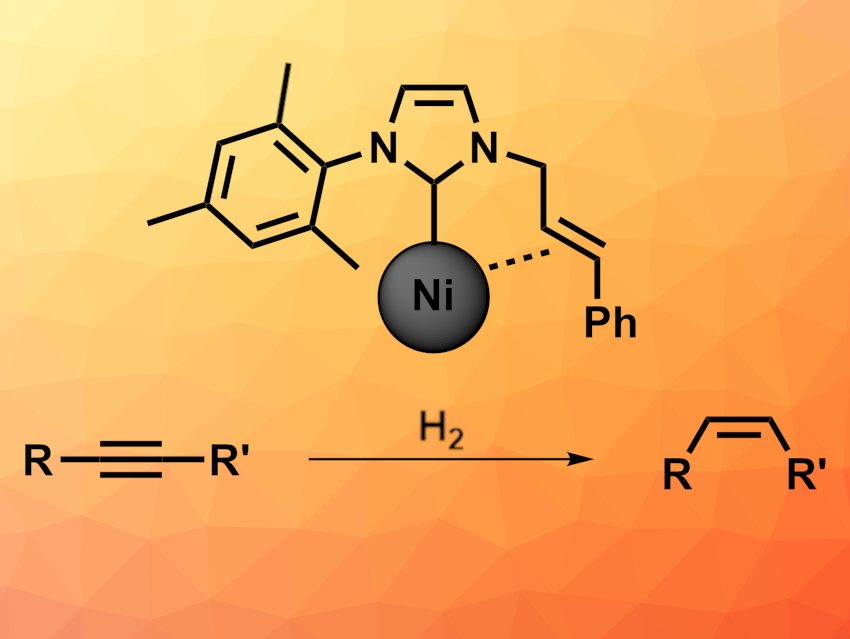Metal nanoparticles can be useful in catalysis applications. However, “naked” nanoparticles tend to aggregate, which reduces the accessible surface and activity. Ligands can help to prevent aggregation. Often, ligands such as thiols or phosphines are used for this. N-heterocyclic carbene (NHC) ligands, which are often used in catalysis, have also garnered research interest. They have been used, e.g., for nanoparticles of Ru, Rh, or Pd, while less is known about nanoparticles of Earth-abundant metals such as nickel with NHC ligands.
Vincent Ritleng, Christophe Michon, Université de Strasbourg, Université de Haute-Alsace, France, Cuong Pham-Huu, Université de Strasbourg, and colleagues have combined NHCs with alkene ligands to coordinate Ni(0) nanoparticles. The resulting catalyst can be used for the (Z)-selective semi-hydrogenation of alkynes and ynamides (pictured). The team first prepared a [NiCpBr(NHC-cynnamyl)] complex from the corresponding imidazolium bromide and nickelocene. This complex was then reduced using methyl magnesium bromide to obtain Ni(0)-NHC-olefin nanoparticles.
The resulting catalyst was used for the semi-hydrogenation of various alkynes and ynamides under 10 bar H2 in toluene or ethanol at 25–60 °C. The desired (Z)-alkenes and enamides were obtained in good to quantitative yields.
- (NHC-olefin)-nickel(0) nanoparticles as catalysts for the (Z)-selective semi-hydrogenation of alkynes and ynamides,
Marta G. Avello, Stéphane Golling, Lai Truong-Phuoc, Loic Vidal, Thierry Romero, Vasiliki Papaefthymiou, Nathalie Kyritsakas, Michael J. Chetcuti, Frederic R. Leroux, Morgan Donnard, Vincent Ritleng, Cuong Pham-Huu, Christophe Michon,
Chem. Commun. 2022.
https://doi.org/10.1039/D2CC05302K




